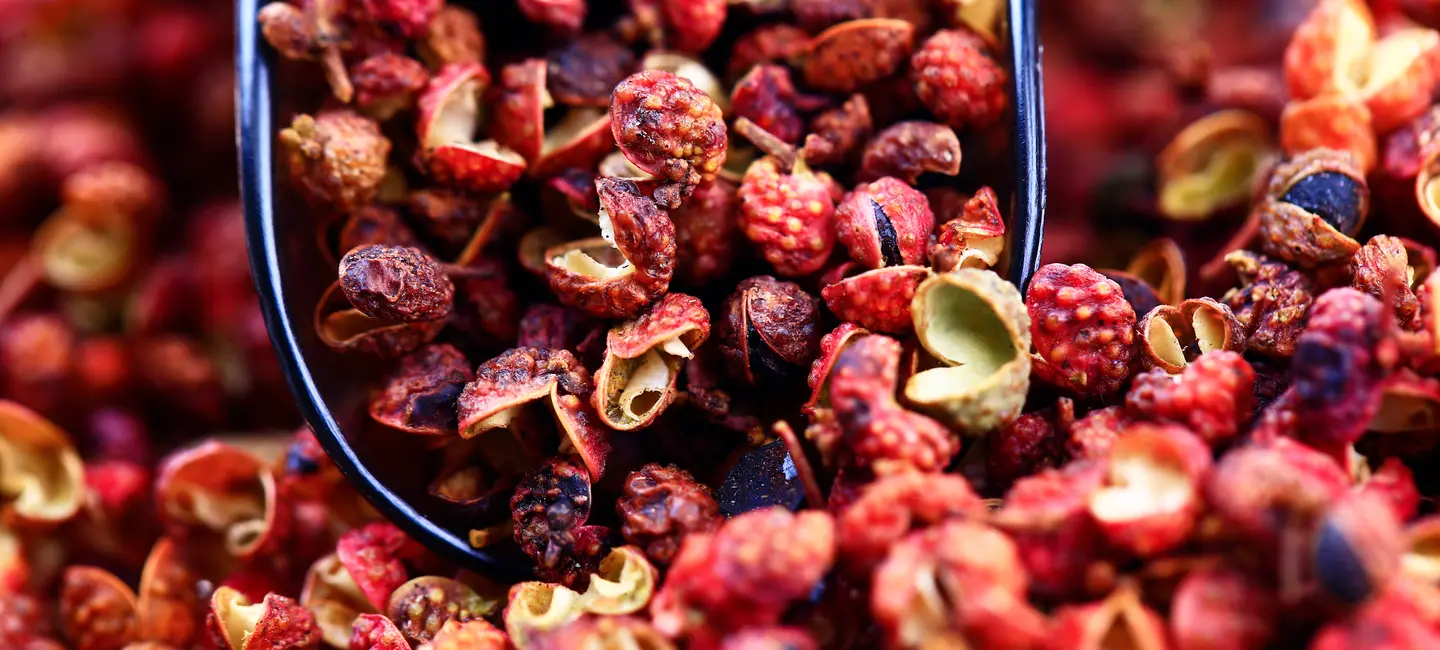
Chinese prickly ash is a plant. The bark, leaves, and berry are used to make medicine. Be careful not to confuse Chinese prickly ash with ash, or northern or southern prickly ash.
People take Chinese prickly ash to treat pain, nausea and vomiting, diarrhea, and many other conditions, but there is no good scientific evidence to support these uses.
In foods, Chinese prickly ash is used as a spice.
Is It Effective?
NatMed Pro rates effectiveness based on scientific evidence according to the following scale: Effective, Likely Effective, Possibly Effective, Possibly Ineffective, Likely Ineffective, Ineffective, and Insufficient Evidence to Rate.
- Aging skin. Early research suggests that using Chinese prickly ash fruit extract 2% cream once a day for 30 days can improve the appearance of wrinkles around the eyes (crow's feet).
- Diarrhea.
- Drowsiness.
- High blood pressure.
- Nausea and vomiting.
- Pain.
- Parasite infections.
- Snakebite.
- Stomach pain.
- Water retention.
- Other uses.
More evidence is needed to rate the effectiveness of Chinese prickly ash for these uses.
Is it Safe?
There isn't enough reliable information to know how Chinese prickly ash might work.
When taken by mouth: There isn't enough reliable information to know if Chinese prickly ash is safe or what the side effects might be.
When applied to the skin: It is POSSIBLY SAFE to apply small amounts of Chinese prickly ash fruit extract 2% cream to the skin around the eyes for up to 30 days.
Special Precautions & Warnings:
Pregnancy and breast-feeding: There isn't enough reliable information to know if Chinese prickly ash is safe to use when pregnant or breast-feeding. Stay on the safe side and avoid use.
Surgery: Chinese prickly ash might slow blood clotting. There is some concern that it might increase the risk of bleeding during and after surgery. Stop using Chinese prickly ash at least 2 weeks before a scheduled surgery.
Medications that slow blood clotting (Anticoagulant / Antiplatelet drugs)
Interaction Rating=Moderate Be cautious with this combination.
Chinese prickly ash might slow blood clotting. Taking Chinese prickly ash along with medications that also slow clotting might increase the chances of bruising and bleeding.
Some medications that slow blood clotting include aspirin, clopidogrel (Plavix), diclofenac (Voltaren, Cataflam, others), ibuprofen (Advil, Motrin, others), naproxen (Anaprox, Naprosyn, others), dalteparin (Fragmin), enoxaparin (Lovenox), heparin, warfarin (Coumadin), and others.
Herbs and supplements that might slow blood clotting: Chinese prickly ash might slow blood clotting. Using it with other products that have the same effect might increase the risk of bleeding and bruising. These products include angelica, danshen, garlic, ginger, ginkgo, Panax ginseng, horse chestnut, red clover, turmeric, and others. Don't use Chinese prickly ash with any of these.
There are no known interactions with foods.
The appropriate dose of Chinese prickly ash depends on several factors such as the user's age, health, and several other conditions. At this time there is not enough scientific information to determine an appropriate range of doses for Chinese prickly ash. Keep in mind that natural products are not always necessarily safe and dosages can be important. Be sure to follow relevant directions on product labels and consult your pharmacist or physician or other healthcare professional before using.
Chinese Pepper, Flatspine Prickly Ash, Frêne Épineux Chinois, Fresno Espinoso Chino, Hua Jiao, Pimienta China, Red Huajiao, Sansho, Sichuan Pepper, Szechwan Pepper, Szechuan Peppercorn, Zanthoxylum bungeanum, Zanthoxylum bungei, Zanthoxylum simulans.
Information on this website is for informational use only and is not intended to replace professional medical advice, diagnosis, or treatment. While evidence-based, it is not guaranteed to be error-free and is not intended to meet any particular user’s needs or requirements or to cover all possible uses, safety concerns, interactions, outcomes, or adverse effects. Always check with your doctor or other medical professional before making healthcare decisions (including taking any medication) and do not delay or disregard seeking medical advice or treatment based on any information displayed on this website.
© TRC Healthcare 2024. All rights reserved. Use and/or distribution is permitted only pursuant to a valid license or other permission from TRC Healthcare.
